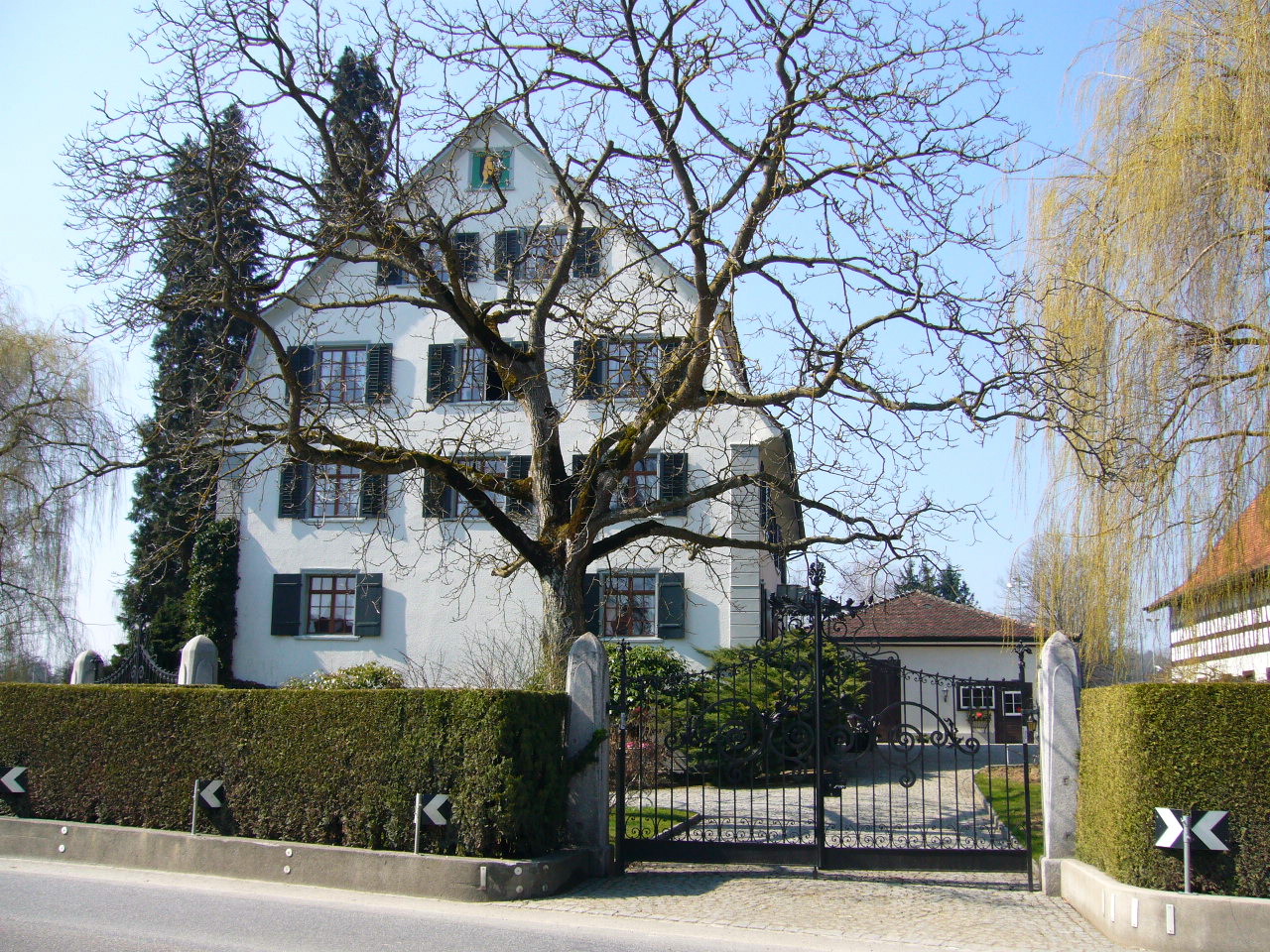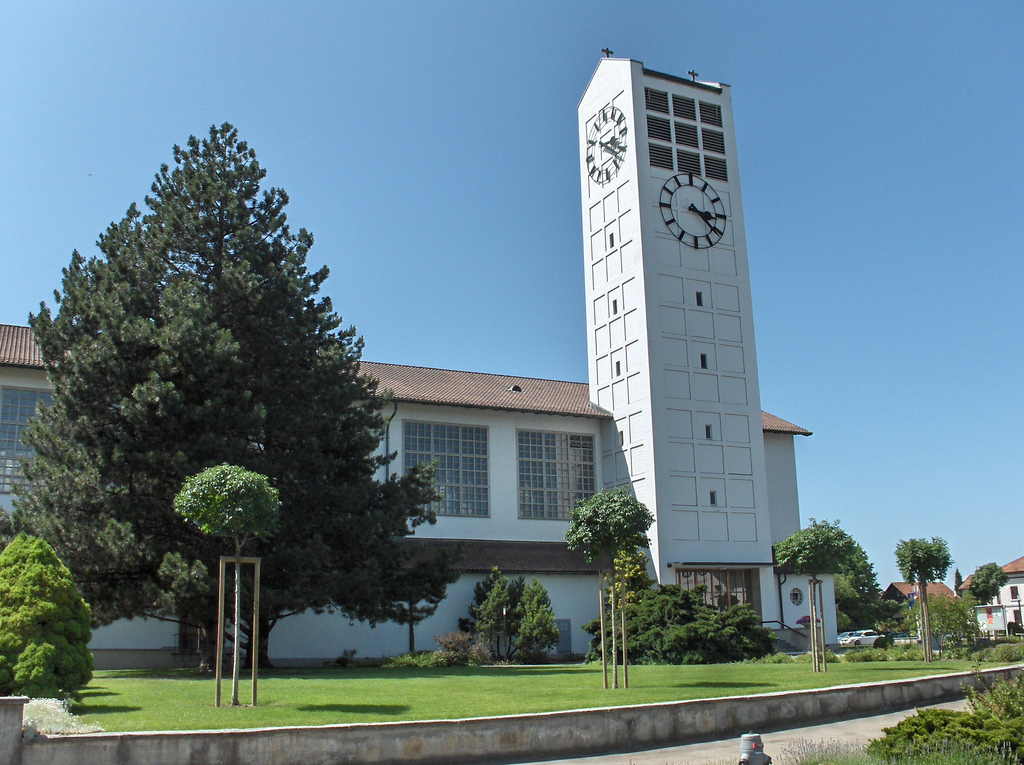|
Erlen
Erlen is a municipality in Weinfelden District in the canton of Thurgau in Switzerland. History The current municipality was formed in 1995 from the smaller communities of Erlen, Engishofen, Ennetaach, Kümmertshausen and Riedt.Amtliches Gemeindeverzeichnis der Schweiz published by the Swiss Federal Statistical Office accessed 14 January 2010 The section of Erlen known as Ehstegen was first mentioned in 838 as ''Escislec''. Before 1798 Erlen belonged in the so-called ''Hohen Gerichte'', which was directly under the authority of the governor of Thurgau. Eppishausen and a house in Erlen were ... [...More Info...] [...Related Items...] OR: [Wikipedia] [Google] [Baidu] |
Weinfelden District
Weinfelden District is one of the five districts of the canton of Thurgau, Switzerland. It has a population of (as of ). Its capital is the town of Weinfelden Weinfelden is a municipality in the canton of Thurgau in Switzerland. It is the capital of the district of the same name. Weinfelden is an old town, which was known during Roman times as Quivelda (Winis Feld). Weinfelden is mostly known through .... The district contains the following municipalities: References {{DEFAULTSORT:Weinfelden (District) Districts of Thurgau ... [...More Info...] [...Related Items...] OR: [Wikipedia] [Google] [Baidu] |
Sulgen
Sulgen is a municipality in Weinfelden District in the canton of Thurgau in Switzerland. Geography Sulgen has an area, , of . Of this area, or 67.0% is used for agricultural purposes, while or 12.9% is forested. Of the rest of the land, or 18.6% is settled (buildings or roads), or 0.3% is either rivers or lakes and or 0.8% is unproductive land.Swiss Federal Statistical Office-Land Use Statistics 2009 data accessed 25 March 2010 Of the built up area, industrial buildings made up 10.1% of the total area while housing and buildings made up 2.5% and transportation infrastructure made up 0.4%. while parks, green belts and sports fields made up 4.9%. Out of the forested land, all of the forested land area is covered with heavy forests. Of the agric ... [...More Info...] [...Related Items...] OR: [Wikipedia] [Google] [Baidu] |
Birwinken
Birwinken is a municipality in the district of Weinfelden in the canton of Thurgau in Switzerland. History Birwinken is probably first mentioned in 822 as ''Wirinchova''. In 1275 it was mentioned as ''Birbichon''. In the 14th Century, Birwinken and Dotnacht formed a distant part of the ''Herrschaft'' of Spiegelberg near Weingarten. Due to its location away from the rest of the ''Herrschaft'' it was sold to a number of other owners, before it was sold by the Muntprat family of Constance, in 1640, to the city of Zurich. The low court of Birrwinken became part of the property of the Vogt of Weinfelden in 1649. Through the court, the village remained tied to Weinfelden until 1798. Between 1803 and 1816 it was a district capital. The village church is mentioned no later than the 12th Century. By 1400, the parish was under the Augustinian monastery in Constance, and until the Protestant Reformation in 1529, was overseen by a monk. The church became a Reformed parish which ... [...More Info...] [...Related Items...] OR: [Wikipedia] [Google] [Baidu] |
Hohentannen
Hohentannen is a municipality in Weinfelden District in the canton of Thurgau in Switzerland. History Hohentannen is first mentioned in 1256 as ''Hontannon''. In 1275 it was mentioned as ''in Hohentannun''. From the Middle Ages until 1798, the lower courts were granted as a fief by the Bishop of Constance to Heidelberg. Hohentannen, Sitterdorf, Heidelberg and Oetlishausen all belonged to the parish of Bischofszell. In 1812 Heidelberg and Oetlishausen joined the municipality of Hohentannen, followed in 1874, by the hamlet of Hummelberg. Hohentannen was formerly on the Sulgen-Bischofszell road, but since the road moved into the valley in 1823 the village has been located off any major road. Agricultural and viticulture were replaced at the end of the 19th century by cattle and dairy farming. By 1900, small embroidery businesses were common in the village. Today, the gravel pits are a source of income. Despite the construction of single-family houses Hohentannen has prese ... [...More Info...] [...Related Items...] OR: [Wikipedia] [Google] [Baidu] |
Langrickenbach
Langrickenbach is a municipality in the district of Kreuzlingen in the canton of Thurgau in Switzerland. History Langrickenbach is first mentioned in 889 as ''Rihchinbahc''. Together with Greuter, it was acquired by the Lords of Helmsdorf in 1351. Between 1521 and 1798 it belonged to the cathedral of Konstanz. Any low court verdict in Langrickenbach was automatically appealed to the high court at Konstanz. Most of the settlement of Belzstadel belonged to Münsterlingen until 1798. A village church was first mentioned around 900. Since the Protestant Reformation in 1529 the Catholics attend the church in Altnau. The current municipality was formed in 1998 when Herrenhof, Langrickenbach, Schönenbaumgarten and Zuben merged into Langrickenbach.Amtliches Gemeindeverz ... [...More Info...] [...Related Items...] OR: [Wikipedia] [Google] [Baidu] |
Sommeri
Sommeri is a municipality in the district of Arbon in the canton of Thurgau in Switzerland. History In 1967, Sommeri was created when the municipalities of Niedersommeri and Obersommeri merged.Amtliches Gemeindeverzeichnis der Schweiz published by the Swiss Federal Statistical Office accessed 14 January 2010 Sommeri is first mentioned in 905 as ''Sumbrinaro''. Between 1474 and 1798, the ''eien'' of Niedersommeri and Obersommeri formed a court of the of [...More Info...] [...Related Items...] OR: [Wikipedia] [Google] [Baidu] |
Zihlschlacht-Sitterdorf
Zihlschlacht-Sitterdorf is a municipality in Weinfelden District in the canton of Thurgau in Switzerland. Geography Zihlschlacht-Sitterdorf has an area, , of . Of this area, or 73.6% is used for agricultural purposes, while or 15.9% is forested. Of the rest of the land, or 9.2% is settled (buildings or roads), or 1.1% is either rivers or lakes and or 0.1% is unproductive land.Swiss Federal Statistical Office-Land Use Statistics 2009 data accessed 25 March 2010 Of the built up area, industrial buildings made up 4.4% of the total area while housing and buildings made up 0.5% and transportation infrastructure made up 0.2%. while parks, green belts and sports fields made up 3.2%. Out of the forested land, 13.6% of the total land area is heavily fores ... [...More Info...] [...Related Items...] OR: [Wikipedia] [Google] [Baidu] |
Amriswil
, neighboring_municipalities= Egnach, Erlen, Hefenhofen, Muolen (SG), Salmsach, Sommeri, Zihlschlacht-Sitterdorf , twintowns = Amriswil ( Low Alemannic: ''Amerschwiil'') is a town and a municipality in Arbon District in the canton of Thurgau in Switzerland near the Lake Constance. The official language of Amriswil is (the Swiss variety of Standard) German, but the main spoken language is the local variant of the Alemannic Swiss German dialect. History Amriswil is first mentioned in 799 as ''Amalgeriswilare''. During the Middle Ages Amriswil and Brüschwil were part of a Bishop's fief. During the 15th Century, the Helmsdorf family ruled in Eppishausen. In the early 17th Century, the village of Amriswil was sold to Adam Tschudi of Glarus, and in 1665 the hospital was sold to St. Gallen. The court rights over Amriswil, Hölzli, Brüschwil and houses in Ruti and Giezenhaus were acquired by the city of Bürglen, which was under the control of the city of St. Gallen. ... [...More Info...] [...Related Items...] OR: [Wikipedia] [Google] [Baidu] |
Swiss Franc
The Swiss franc is the currency and legal tender of Switzerland and Liechtenstein. It is also legal tender in the Italian exclave of Campione d'Italia which is surrounded by Swiss territory. The Swiss National Bank (SNB) issues banknotes and the federal mint Swissmint issues coins. In its polyglot environment, it is often simply referred as german: Franken, french: franc, it, franco and rm, franc. It is also designated through signes: ''Fr'' Some fonts render the currency sign character "₣" (unicodebr>U+20A3 as ligatured Fr, following the German language convention for the Swiss Franc. However, most fonts render the character as F with a strikethrough on the lower left, which is the unofficial sign of French Franc. (in German language), ''fr.'' (in French, Italian, Romansh languages), as well as in any other language, or internationally as ''CHF'' which stands for ''.'' This acronym also serves as eponymous ISO 4217 code of the currency, CHF being used by banks and financial ... [...More Info...] [...Related Items...] OR: [Wikipedia] [Google] [Baidu] |
Albanian Language
Albanian ( endonym: or ) is an Indo-European language and an independent branch of that family of languages. It is spoken by the Albanians in the Balkans and by the Albanian diaspora, which is generally concentrated in the Americas, Europe and Oceania. With about 7.5 million speakers, it comprises an independent branch within the Indo-European languages and is not closely related to any other modern Indo-European language. Albanian was first attested in the 15th century and it is a descendant of one of the Paleo-Balkan languages of antiquity. For historical and geographical reasons,: "It is often thought (for obvious geographic reasons) that Albanian descends from ancient Illyrian (see above), but this cannot be ascertained as we know next to nothing about Illyrian itself." the prevailing opinion among modern historians and linguists is that the Albanian language is a descendant of a southern Illyrian dialect spoken in much the same region in classical times. Alternativ ... [...More Info...] [...Related Items...] OR: [Wikipedia] [Google] [Baidu] |
Italian Language
Italian (''italiano'' or ) is a Romance language of the Indo-European language family that evolved from the Vulgar Latin of the Roman Empire. Together with Sardinian, Italian is the least divergent language from Latin. Spoken by about 85 million people (2022), Italian is an official language in Italy, Switzerland (Ticino and the Grisons), San Marino, and Vatican City. It has an official minority status in western Istria (Croatia and Slovenia). Italian is also spoken by large immigrant and expatriate communities in the Americas and Australia.Ethnologue report for language code:ita (Italy) – Gordon, Raymond G., Jr. (ed.), 2005. Ethnologue: Languages of the World, Fifteenth edition. Dallas, Tex.: SIL International. Online version Itali ... [...More Info...] [...Related Items...] OR: [Wikipedia] [Google] [Baidu] |
Population Growth
Population growth is the increase in the number of people in a population or dispersed group. Actual global human population growth amounts to around 83 million annually, or 1.1% per year. The global population has grown from 1 billion in 1800 to 7.9 billion in 2020. The UN projected population to keep growing, and estimates have put the total population at 8.6 billion by mid-2030, 9.8 billion by mid-2050 and 11.2 billion by 2100. However, some academics outside the UN have increasingly developed human population models that account for additional downward pressures on population growth; in such a scenario population would peak before 2100. World human population has been growing since the end of the Black Death, around the year 1350. A mix of technological advancement that improved agricultural productivity and sanitation and medical advancement that reduced mortality increased population growth. In some geographies, this has slowed through the process called the demographic tra ... [...More Info...] [...Related Items...] OR: [Wikipedia] [Google] [Baidu] |




